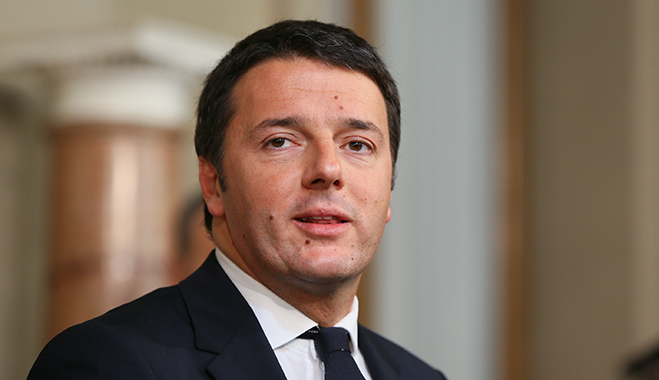
When Prime Minister Matteo Renzi made clear his ambition for Italy to host the 2024 Olympics, the proclamation was met with mockery and ridicule. The southern European country is in the midst of its longest recession since WWII: unemployment figures have climbed to their highest since records began in 1977, and many don’t see GDP growth exceeding even one percent until 2018 at the earliest. “Proposing Rome as a future Olympic city is like painting an old Fiat 500 red and hoping that people will believe it’s a Ferrari,” Luca Zaia, Governor of the Veneto region, told The Telegraph in December.
13.2 percent of the Italian workforce is currently unemployed, and while that in itself is dangerously high, of even greater concern is youth unemployment, which rose to 43.3 percent in October. That’s almost half of all young people in Italy unable to find work – over 708,000 – and it largely comes down to the government’s preoccupation with regulations that protect older workers, while severely limiting the opportunities for youngsters with less experience.
A connection can be made between high youth unemployment figures and the results of an OECD report released in September, which found that university graduates in Italy and Spain possess significantly lower levels of basic skills than other member nations. In fact, on average, Italian and Spanish graduates were less skilled than high school leavers in the highest performing countries, Japan and the Netherlands. While this does correspond with high youth unemployment figures – Spain makes even Italy look good, at 53.8 percent – a more common argument is that joblessness is rife because of a mismatch between supply and demand. The skills students are graduating with are disproportionate to the jobs available, for example, there are too many law graduates, and too few engineers.
Unemployment forecasts for 2015 vary, from EY’s 12.7 percent to analysts at Istat, Italy’s own national statistics agency, who see it falling to 12.4 percent. GDP growth predictions hover between zero and one percent, but S&P said it anticipated much slower progress than official forecasts, bringing its prediction down from an initial 1.1 percent to just 0.2 percent. The credit ratings agency also cut Italy’s debt score to BBB-; its lowest investment-grade rating and just one notch above ‘junk’ status, citing its inability to stabilise public debt among various other factors.
Renzi has been fighting labour unions and opposing politicians to implement reforms aimed at fixing the problem, most recently the Jobs Act, which still awaits approval from parliament. If consented to, six months is allocated to specify the measures being taken and pass them, meaning real change is unlikely until mid-June 2015 at the very earliest. And it’s not just the rivals and labour unions that need convincing: citizens aren’t happy either. Rallies have broken out in cities across the country, disrupting transportation services and causing chaos on the streets with several arrests made. The reforms, aimed at making the labour market more flexible, include loosening the restrictions on firing employees when business slows, and weakening unlawful dismissal rights. However, protestors claim that the government has made workers its scapegoat by limiting their rights without addressing the fundamental problem.
S&P anticipates unemployment to continue limiting both private sector spending and investment activity well into 2015. “Although we think the announced reform measures in a wide range of policy areas will ultimately help strengthen the economic fundamentals and resilience of the Italian economy, these benefits will likely not be felt in the near term,” reads its forecast. “In fact, the persistently weak economic conditions could raise fiscal risks before the growth-enhancing structural reforms take root.”
It looks like 2015 could see a faceoff of sorts between Renzi and neighbouring France’s President Hollande, who is up against the similar challenge of shaking up the labour market. If the currently rigid, hostile market is not opened up to the younger generations, when the current labour force reaches inevitable retirement and there’s no one to fill those shoes, it’ll be a far bigger mess Italy finds itself in.



